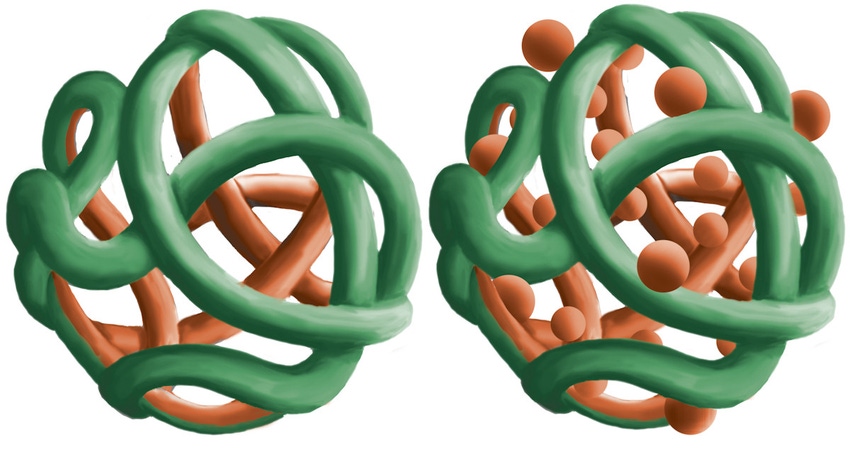March 22, 2016

It's not often a new technology shows up on your doorstep, but an ag innovator from Canada is bringing nanotechnology to crop protection products. The company - Vive Crop Protection - is offering two new products for 2016 with familiar active ingredients but totally new delivery systems.
Darren Anderson, the company's vice president for regulatory issues, talked about the company's two new products Azteroid and Bifender during Commodity Classic. "We use a nano-technology shuttle to carry active ingredient where it needs to go," he explains. That's pretty technical, but if you look at the image on this page you'll see what appears to be a web of material that's holding tiny particles of active ingredients.
That web, or shuttle, is engineered to maintain the active ingredient in a suspended state until it gets where it belongs. "This is a new delivery system," Anderson explains. And Vive is a relatively new company started in 2006 with academics from the University of Toronto who had a new idea and wanted to bring it to market.
Nanotechnology is a term for material science that works nearly at the molecular level. In this case that polymer "shuttle" is very small, yet large enough to be a carrier and protector for the active ingredient.
Azteroid fungicide has the active ingredient azoxystrobin, a fungicide a.i. that's used by other crop protection companies. Bifender is bifenthrin. Essentially these are well-known active ingredients, but neither are known for use with starter fertilizer.
"Azoxystrobin usually separates in starter fertilizer," Anderson explains. "However, with this technology the product stays thoroughly mixed until it reaches the soil where the fungicide is released."
Yield information
Soil applied fungicide gives the plant a good start by controlling disease, and the strobilurin class of fungicide has been known to show a plant health boost too. Anderson shares that in normal use a starter fertilizer will give you a 5 to 10 bushel per acre bump in yield. Vive saw an 8-plus bushel benefit on top of that in trials from the 2015 season.
Anderson admits that the corn results were based on eight trials, while the 2.6 bushel per acre increase for soybeans came from five field trials. More trials will be held this season.
Bifender offers in-soil projection against a range of below surface pests in corn, soybean, cotton, potatoes and peanuts. The product is also just as compatible with starter fertilizer as Azteroid, and can be tank mixed with the fungicide too. And both products can be used with treated or untreated (where the most benefit lies) seed.
The key is that "basket" polymer shuttle that carries the active ingredient to the location it needs to be delivered. The idea is actually relatively simple, the technology itself is a lot more difficult. The company calls the nano-particle shuttle technology the Allosperse delivery system. The elegance of the technology allows the company to custom tailor the polymer shuttle to meet specific delivery requirements.
This is fledgling technology, but the aim is to target how a pesticide interacts with the environment to more accurately control how it is delivered. The idea is to "enhance trusted products" as Anderson explains. So azoxystrobin may not be new, but this delivery system is, and allows the fungicide to be more effective in an in-furrow application.
You can learn more about the technology and how it is used by visiting vivecrop.com.
About the Author(s)
You May Also Like






